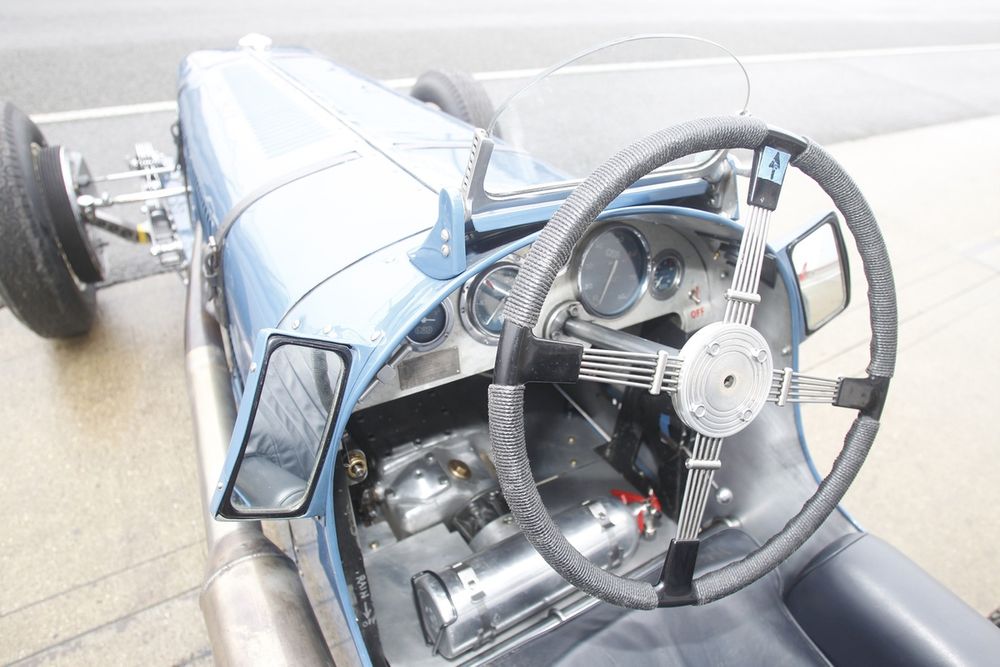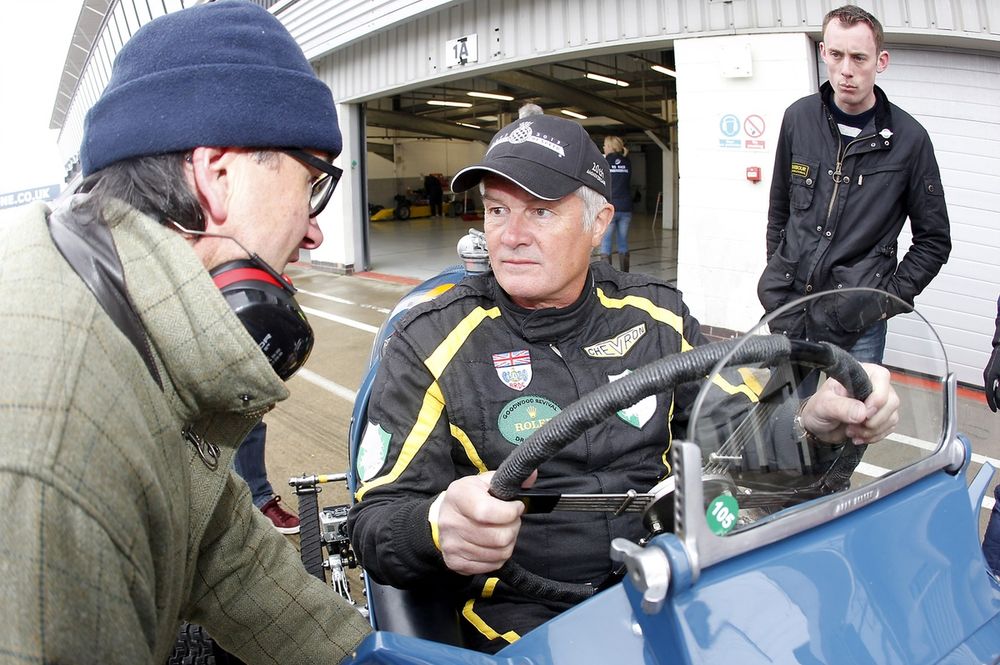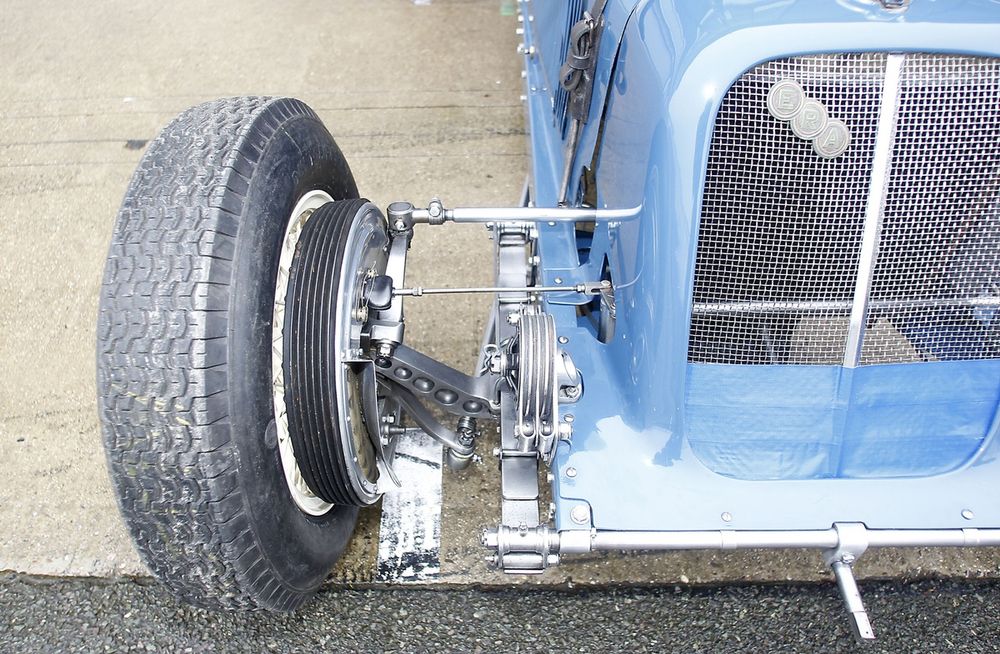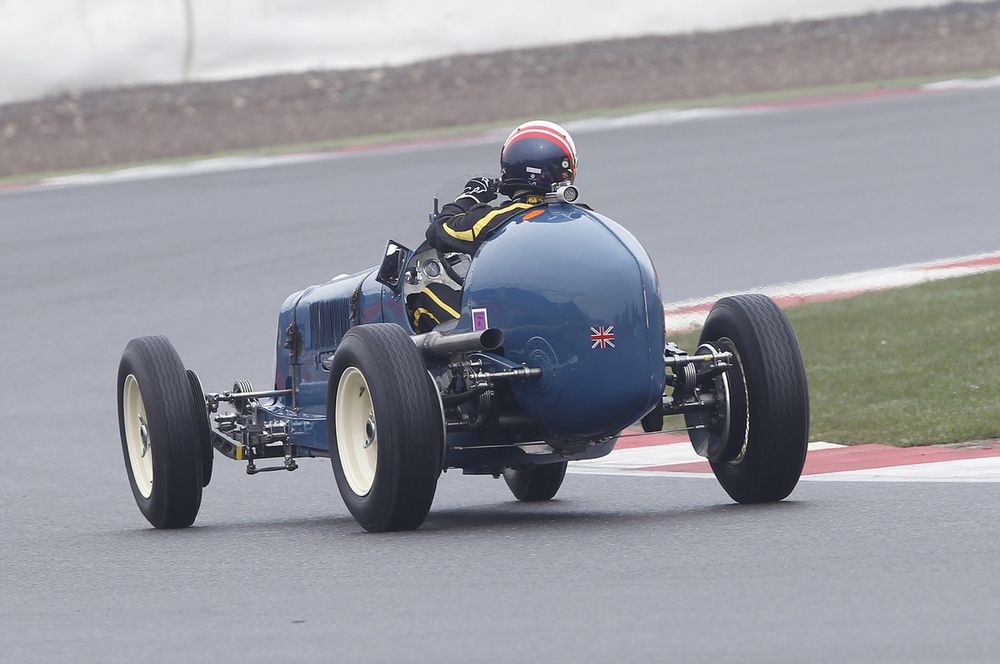Vanwall, BRM, Cooper and Lotus. These are the names that usually get the credit when it comes to the early days of British motorsport success. They certainly all played their part in Formula 1 in the 1950s, but two decades earlier a different firm had hinted at what was possible for a UK operation.
When English Racing Automobiles started building voiturettes – effectively a pre-Second World War Formula 2 – in 1934, it had been a decade since Britain’s last significant single-seater success in Europe. After Henry Segrave’s victory in the 1924 San Sebastian Grand Prix for Sunbeam, UK efforts were directed at sportscars or Britain’s first permanent race circuit, Brooklands.
ERA changed that. Raymond Mays had experienced success with a modified Riley 12/6 – the ‘White Riley’ – in 1933 and, with backing from wealthy amateur racer Humphrey Cook, founded ERA. Along with design and engineering input from Peter Berton, Reid Railton and Murray Jamieson, Mays developed the first ERAs for the 1934 season.
Armed with 1100cc and 1500cc supercharged six-cylinder engines, the ERAs took on the Bugattis and Maseratis in the single-seater category immediately below GP racing. Once over initial teething troubles, they impressed, dominating the 1935 season in the hands of drivers such as Richard Seaman, who would go on to race for the Mercedes-Benz GP team.
The cars also scored successes in hillclimbs and, while overtaken by newer cars from Maserati and Alfa Romeo in the late-1930s, still proved useful tools for privateers after World War Two.
With the 1.5-litre supercharged/4.5-litre unsupercharged category becoming the new F1 after hostilities ended, ERAs became eligible for top-level GP racing. The venerable workhorse was never likely to take outright wins, but Bob Gerard finished third and second in Silverstone’s 1948 RAC and 1949 British GPs respectively, and was in the top six for the first two events of the newly formed world championship in 1950.
Reid was impressed with the ERA’s build quality
Photo by: Mick Walker
Not only did the relatively simple and rugged ERAs prove British engineering could compete on a world stage, they also encouraged Mays to press on with BRM (British Racing Motors), which would – eventually – be part of the UK’s successful rise in GP racing.
PLUS: BRM’s roller coaster ride in F1
Almost as soon as the ERAs stopped racing in contemporary events, they were put into service in historic competition. Only 17 were built and thus the survivors are among the most continuously used competition cars in the world.
It only seemed right, therefore, that Autosport should mark the 80th birthday of one of the UK’s most significant early racers with a track test. Thanks to current owner Nick Topliss, it’s ERA R4A that is at Silverstone waiting for us. And a little while later former British Touring Car racer Anthony Reid, a man familiar with a wide range of historic machinery, walks into the garage ready to prepare for his first taste of an ERA.
Although not technically groundbreaking, the ERAs did have some interesting features. As well as a pre-selector gearbox, R4A also has a primitive limited-slip differential and a fuel tank that is pressurised by the supercharger
Getting ready to go
“The first thing that strikes me is what a remarkable piece of engineering it is,” says Reid. “The way it’s put together is really purposeful, designed for the job in hand. It looks really solid so I have quite a lot of confidence just looking at the car. You can see it’s well put together.”
Top 10: Ranking the greatest BTCC drivers not to be champion
As is perhaps to be expected of a car that has competed across eight decades, R4A has picked up a few tweaks along the way. No ERAs were the same, and suspension, engine and chassis upgrades were introduced either side of WW2.
Perhaps the most obvious on R4A are the sloping radiator grille and two-litre engine, both of which it acquired in the 1940s. Aside from the extra 500cc, however, preparer James Baxter believes R4A is close to late-1940s GP spec.
Although not technically groundbreaking, the ERAs did have some interesting features. As well as a pre-selector gearbox (more of that later), R4A also has a primitive limited-slip differential and a fuel tank that is pressurised by the supercharger.

Cockpit in an ERA is fairly exposed, which took some adjusting for Reid
Photo by: Mick Walker
“I found the car in Austria and persuaded the guys to sell it,” says Topliss, who started racing in 2012 with a GN special before buying the ERA. “It hasn’t really had a time not racing, it’s always been used and it’s been all over the place.
“I didn’t ever imagine I’d be able to afford one, but I was very lucky and I did well in business. I consciously didn’t buy a modern car because I thought I’d be a bit mad. I thought if I buy something old then I can be sensible because there is no expectation.
“As soon as you enter the Vintage Sports-Car Club and start competing, the car you really want is an ERA. It’s the car I would sketch on the back of my geography book when I was 10 years old. That’s what a race car looked and sounded like.”
It takes something like 11 steps to start an ERA, but Topliss reassures Reid that things are a bit simpler once up and running.
“People say it must be terrifying, but it’s really not because it’s so communicative,” he adds. “It tells you exactly what it’s doing. The grip level is such that you sort of just dance the thing. An ERA snaps at the back all the time, but you are dancing it around the corner.
“It’s predictable and it’s intrinsic to the car. There’s not a lot you can do to set them up. There’s no anti-roll bar; you can change dampers and you can change the tyre pressures, but the set-up does very little.
“You’ll see them driven in really amazing styles. I tend to be as smooth as I can, whereas others really pitch it in and take a whole armful of opposite lock.”
With around 260bhp on skinny tyres and a damp track, however, Topliss doesn’t keep it completely straight when he goes out to warm up the car, which has a fresh engine, back axle and gearbox for the 2014 season. He grabs Baxter’s attention with a big slide through Woodcote before coming in to hand R4A over.
Reid climbs aboard

Reid was impressed by the gearbox and engine in the ERA once he’d got used to its nuances
Photo by: Mick Walker
Reid has never raced a pre-WW2 car and has several things to get used to, not least the high seating position and the pre-selector gearbox, which involves choosing the gear ahead of time, then dipping the actuator (‘clutch’ pedal to you and me, even though the car has no clutch).
Reid is understandably tentative with the methanol-fuelled machine at first, but soon starts to press on. He runs for much of the session before returning the precious car to its owner.
“Wow, what an experience that was!” are Reid’s first words before he has even taken his helmet off. “It’s quite a challenge to drive, but it’s a remarkable bit of engineering for the 1930s. And I love the gearbox.”
“You’re immediately aware you have no seat belts, you’re sitting on top of the car, and are really exposed, but the engine is really advanced”
Anthony Reid
Almost immediately, he switches back into full racing driver mode, suggesting the ERA be softened, which the team immediately starts working on for Topliss’s runs planned for the afternoon.
“It picks up all the dips and cambers on the track and loses mechanical grip,” explains Reid, who also reports understeer on corner entry and suggests freeing up the diff.
The engine impresses
After changing and taking a little time to reflect, Reid remains enthusiastic and pleasantly surprised about the new experience. The engine, which can rev to around 6000rpm, comes in for praise.
“Stepping into the car and going out on track you’re immediately aware you have no seat belts, you’re sitting on top of the car, and are really exposed, but the engine is really advanced,” he says. “It has a flat torque curve. It’s amazing.

Despite its age, Reid reckoned there was much to be said for pre-WW2 engineering
Photo by: Mick Walker
“The power delivery is really quite sophisticated in terms of there weren’t any pops, bangs, misfires. It gives a very smooth power delivery and has a remarkably wide powerband.”
Reid is a regular at historic events like the Goodwood Revival and Silverstone Classic, and he feels the ERA is stronger in some areas than later cars he has raced.
“With cars from the 1950s and 1960s you have to keep the engine on the boil,” he continues. “With this it didn’t seem to matter which gear you were in. It just gave good, strong power, like an electric motor. You could drive a lap in both third and fourth gear without any issues.”
He is also a fan of the pre-selector gearbox: “I wish I’d had a gearbox like that when I was driving Formula Ford in the 1970s! It worked well and I got to grips with it straight away.
“From a racing driver’s perspective, you don’t want to worry fumbling about for a gear lever in the most important phase of cornering, which is braking. On the straight beforehand you put it in the gear you need and then you dip the ‘clutch’ in the normal way during the braking process and it takes the gear. It’s incredible.
“Winning races is all about simplifying the task for the driver, so stuff like a pre-selector gearbox has really got to help. Racing doesn’t have to be complicated and you do need both hands on the wheel…”
Handling challenge
The handling and drum brakes are the areas Reid most notices the ERA’s age. “The brakes are a little disconcerting,” he says. “When you apply the brakes you are getting varied braking forces from four wheels as you take up the slack in the linkages. There’s a lot of dancing about in the braking zone.
“But they get the car stopped and are remarkably good in the sense they are consistent and don’t fade. Drums can be a nightmare – on a Jaguar C-type after two laps they just completely go away. Cooling and venting is a big issue, so I was a bit wary, but they are fantastic.

Drum brakes on the ERA meant Reid was wary going into corners
Photo by: Mick Walker
“The chassis dynamics are also quite crude. The wheels don’t follow the contours of the road and you have understeer on turn-in. You have to wait for that to diminish.
“Once you can open the throttle, then you have a nice, flowing power-oversteer balance from mid-corner to exit, although that does take a bit of courage, skill and practice! But I can see how you can have a lot of fun in this car.”
Top 10: Ranking the best pre-war grand prix cars
Fun and competitive pretty much sums up the ERA. In VSCC events the ERAs are about the fastest cars around and continue to rack up win after win, a fitting tribute to one of the important early stories of British efforts in international motorsport.

ERA is celebrating 90 years in 2024 and the cars continue to be raced by enthusiastic owners
Photo by: Mick Walker
In this article
Kevin Turner
Historics
Anthony Reid
Be the first to know and subscribe for real-time news email updates on these topics
Subscribe to news alerts
Read the full article here

